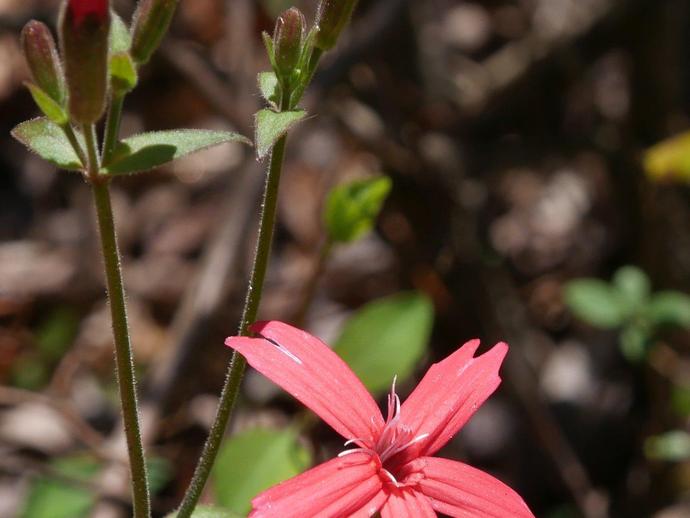October 18, 2020
We're reaching into the archives for today's #BenInNature post! The following post was originally published on April 6, 2020.
Behold the fire pink (Silene virginica)! When I was a little kid, the fire pink was always my favorite wildflower, and my grandma and I would go poking around the old spring every ... spring ... to look for them. Unfortunately, fire pinks are fairly short-lived perennials, lasting only about 2-3 years. I found this one not too far from the old spring, and while it's the first I've encountered so far this year, it will hopefully not be the last. Fire pinks begin blooming in the spring and continue blooming throughout the summer. Their main pollinator is the ruby-throated hummingbird (Archilochus colubris), which is drawn to the bright red flowers and the sugary nectar contained within. Fire pinks belong to the family Caryophyllaceae, which is a large family containing more than 2,500 known species. There's a good chance that you had the most famous member of this family pinned to your lapel or dress at your high school prom; fire pinks belong to the same family as carnations!
ABOUT #BenInNature
Social distancing can be difficult, but it presents a great opportunity to become reacquainted with nature. In this series of posts, Administrator of Science Ben Williams ventures outdoors to record a snapshot of the unique sights that can be found in the natural world. New updates are posted Monday - Friday, with previous posts highlighted on the weekends.
NATURE PHOTO IDENTIFICATIONS
If you discover something in nature that you would like help identifying, be sure to message us right here on Facebook with a picture (please include location and date of picture) and we'll have our experts help you identify it!

 Hours & Admissions
Hours & Admissions Directions
Directions

